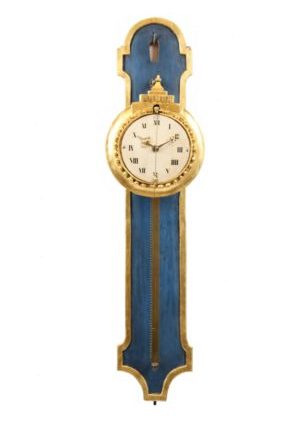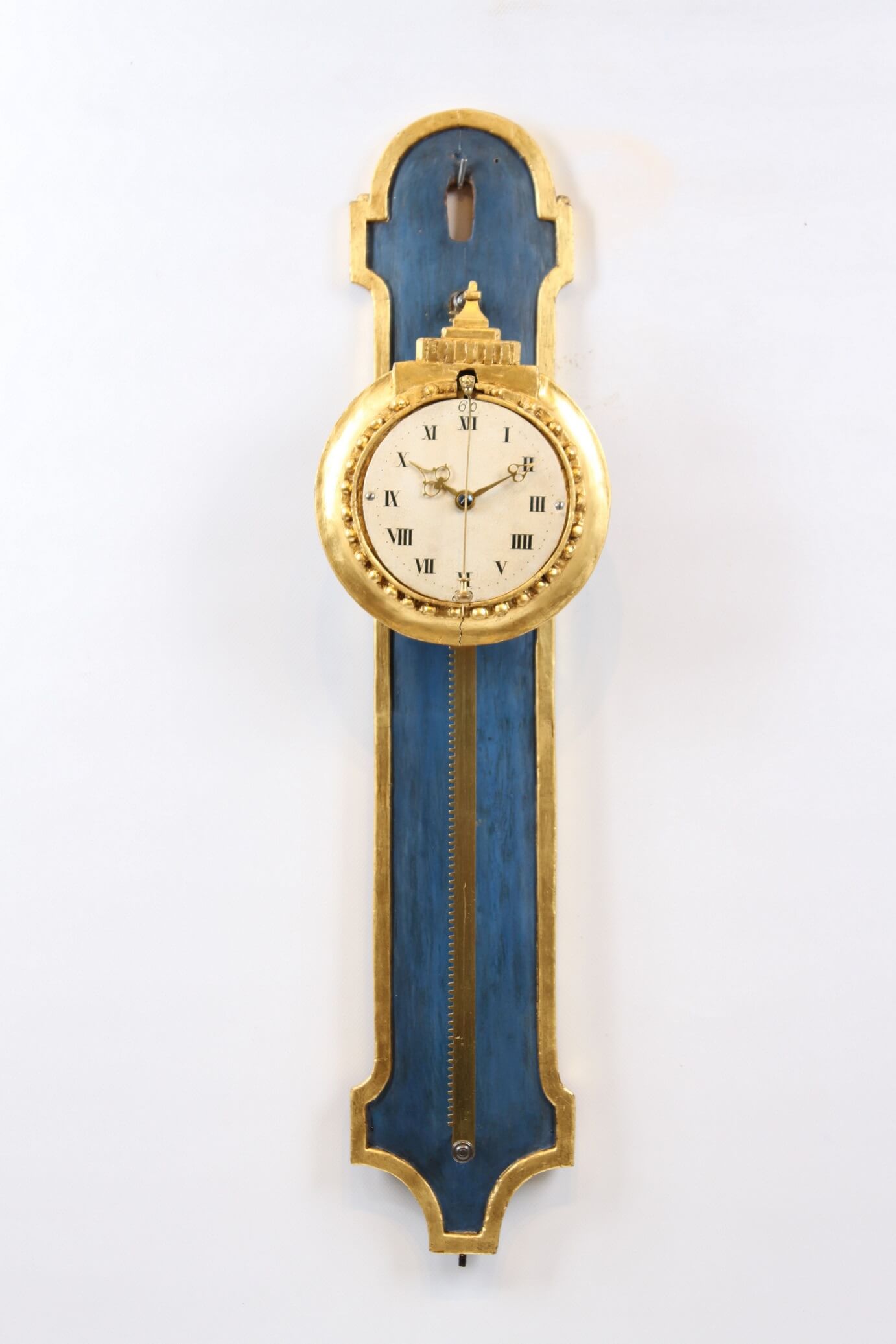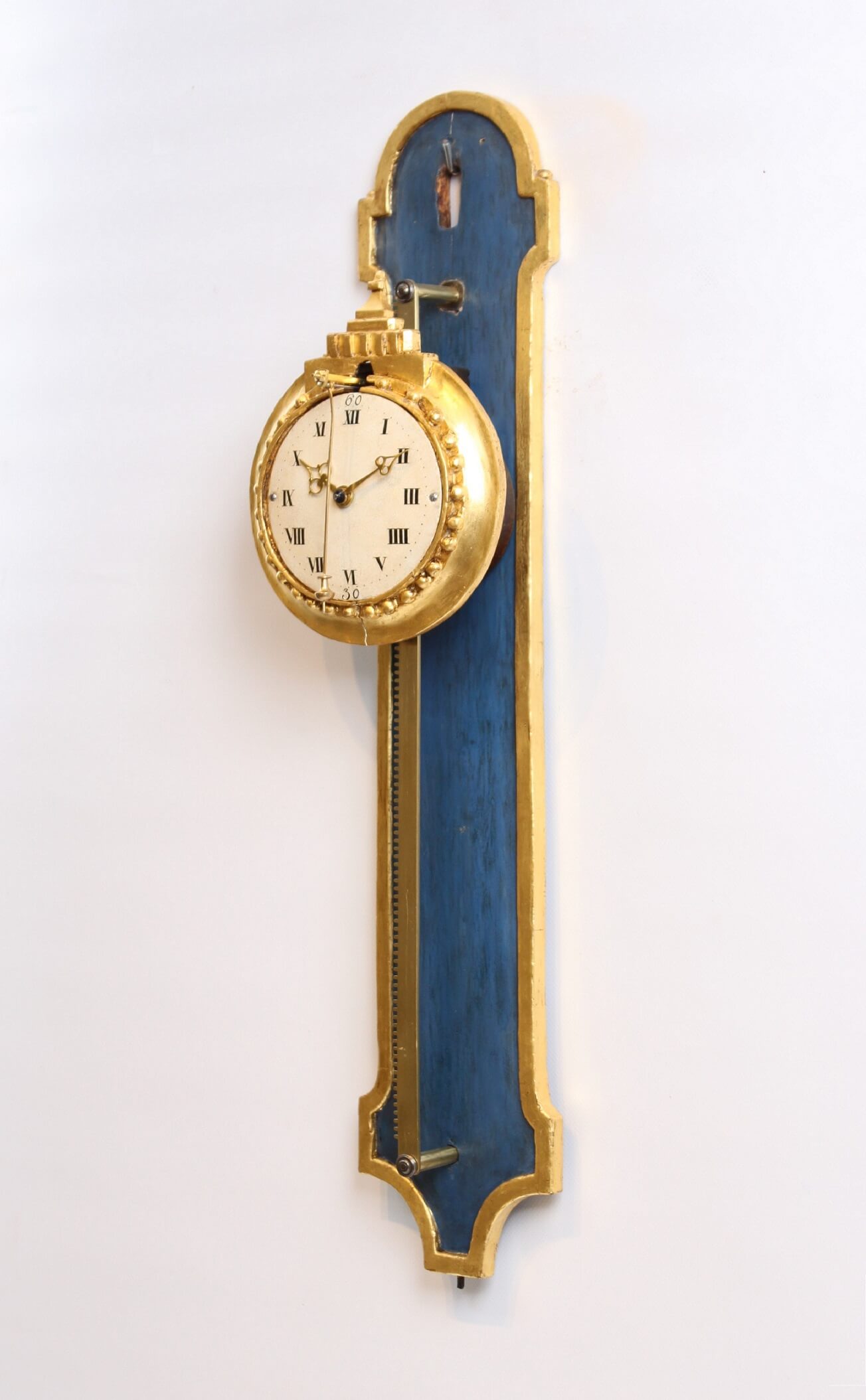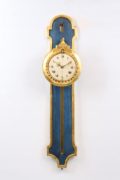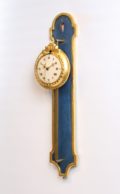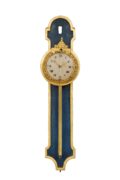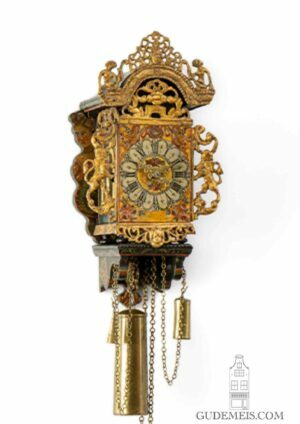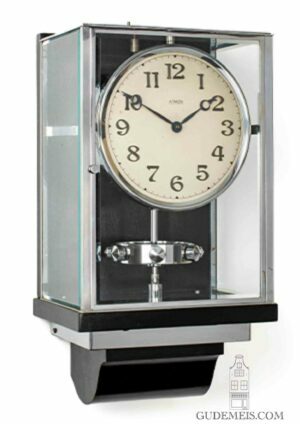A South German Louis XVI polychrome and parcel gilt rack wall timepiece, circa 1780
Description
10.7-cm painted dial with Roman numerals and pierced brass hands, 30-hour movement with verge escapement and front pendulum, driven by its own weight along the rack, parcel gilt bezel and cresting, shaped polychrome and parcel gilt back board.
Most clocks have a movement that has an energy source like a mainspring or a weight to drive the clock. Besides that the movement needs a regulating part that makes sure that the energy is released regularly. Without it the hands would spin around uncontrollably until the spring would have wound down or the weight reaches the floor. The amusing part this clock is that the movement and dial are used as a weight itself. By engaging with the teeth on the ‘rack’ the wheels of the movement can turn. One can simply ‘wind’ the clock by pushing the whole back up the rack. Another amusing part of this clock is the front pendulum. This South German and Alpine tradition is called ‘Kuhschwanz Pendel’ which translates into ‘Cow tail pendulum’. This is not surprising because the pendulum swing like the tail of a cow in front of the dial. Many people are fascinated by the movement slowly descending down the rack while running. A beautiful object that will be a conversation piece for anyone who sees it for the first time.
